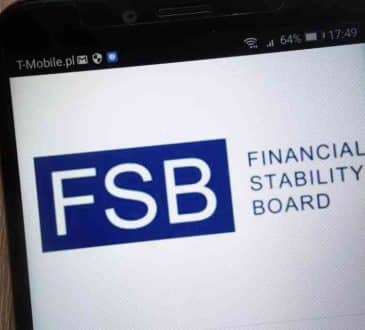Multigenerational Teams Are An Asset – Here’s How To Lead Them

Now, more than ever, it’s becoming more common to have teams that include recent high-school graduates and workers up through their 60s and beyond. While we expect the younger generations to step into the workforce, we may not expect older generations to remain as long as they have been.
It might surprise you that there are five generations in the workforce for the first time in history as more experienced workers prefer working beyond their typical retirement age to stay challenged, productive, and to earn a bit more cash.
These five generations include the traditionalists, those born between 1925 and 1945; baby boomers born between 1946 to 1964; generation X from 1965 to 1980; millennials from 1981 to 2000; and generation Z from 2001 to 2020.
While it may come with challenges, having a multigenerational team is an asset to your company. A 2020 AARP survey of 6,000 employers found that 83% of leaders believe that having a multigenerational workforce is a huge factor that plays a part in long-term success.
It’s no surprise that the generations will differ in many ways. They bring different skills, mindsets, attitudes, behaviors, and ways of working, which can cause conflict and misunderstandings between team members.
But as a leader, learning how to manage these differences is essential. It’s your role to maintain an inclusive culture so that people of different ages and backgrounds can learn from and support each other. Having a diverse workforce will lead you to a more successful business.
So how do you embrace it?
- Overcome confirmation bias and encourage your team to do the same
It’s no secret that each of these five groups has stereotypes associated with them – an essential first step is to be aware of these stereotypes and their impact on your assumptions and expectations of your employees. For example, people often describe Boomers as collaborative but resistant to change and technology. Generation X workers are seen as independent, pragmatic, and technically flexible, while millennials are stereotyped as tech-savvy, eager to make a difference, and driven but entitled. Generation Z, the youngest group entering the workforce, has been stereotyped as more progressive but easily distracted, addicted to tech, and disloyal. It is essential to become aware of your own biases and how they might impact your decision-making and relationships with colleagues. As humans, our brain naturally aligns with information that confirms what we already believe. These internally held beliefs can be hard to shake, but it’s crucial to reevaluate your ideas, especially when leading a multigenerational workforce.Become aware of and work to minimize your confirmation biases by acknowledging any age-based generalizations and biases you may have. These biases may come from long-held beliefs, previous experiences, or reflections on age and generalized behaviors. You may assume, for example, that older people are less able to cope with new technology. Or you may believe younger people will be less committed to the team and the company.
The best method for debunking these stereotypes and biases can come through listening with an open mind– avoid making assumptions about who may be able to bring something specific to the team simply because of their age. Instead, listen to individuals sharing their perspectives. When bringing employees together, encourage them to listen to each other’s ideas and perspectives. You can use “perspective taking” as an exercise: Create a scenario and ask each team member how they see it from their point of view. The diversity of these differing perspectives is an asset to your team.
- Get Clarity on the company’s true vision and values – and commit to them
What is your company’s mission? What’s the long-term vision? How do you want people on the outside to view your business? What are your company’s values? Knowing what your business stands for influences the organizational culture and drives the how and why of your strategies and processes. Being open and transparent with employees about your vision and values – and sticking to these consistently – is important for your workforce, no matter their age. Ultimately, this is your brand’s “personality” – and the ideal you want your employees to experience through their daily work.Building a culture aligned with your mission that values transparency, open communication, and honesty will be a positive first step in allowing a multigenerational workforce to flourish. Whether Generation Z or nearing retirement, every employee will embrace policies focusing on flexibility and wellbeing, recognition for staff doing excellent work, and training programs for professional development.
These elements create the foundation for a strong workforce that feels engaged and valued. So now it’s time to ask yourself: what are the mission, vision, and values principles that your company stands for? To get buy-in from your workforce, have an anonymous virtual suggestion box where they can provide their ideas and eventually vote for the final editions– this is how you establish engagement and trust.
- Understand communication issues that may arise– and how best to tackle them
Communication issues can arise in so many different ways. There may be a disconnect between the preferred types of communication methods (phone/email); differences in how we communicate (formal or casual); or between people who like to tell the whole story with lots of details and those who want just the critical facts. People also easily misunderstand a person’s body language, facial expressions, tone, and pace of speech.Communicating effectively starts with developing an awareness of your communication style and the nonverbal cues you give while speaking and listening.
So how can you address potential conflict?
First, know that a foundation of mutual respect, empathy, and a desire for understanding is crucial to effective communication between all employees.
Secondly, ensure you have open communication channels: an open-door office policy, inviting people to instant message or email you, a weekly brainstorming meeting where people can raise ideas, or even a lunchtime check-in where everyone can participate.
Thirdly, remote work has led to more disconnected teams than before the pandemic. Employees no longer have incidental contact where they bump into each other in the office hallway, in the lunchroom, or have face-to-face meetings together. Together with your team, you can create innovative ways for everyone to come together. For example, employees can participate in a social event outside of work, a “lunch and learn” workshop in the office, or an opportunity to take one afternoon off for team building. If team members get on well, whatever their age, they’re less likely to get frustrated by the differing communication styles – and instead, learn to work with or around them.
- Explore ways to engage your workforce to work together as a team
Whatever the team member’s ages, one key thing for every business to be aware of is that disengaged workers cost the US trillions of dollars in lost productivity every year. It’s down to you as a leader to identify when workers are disengaged and discover what is hindering their engagement. Being a modern leader means you’re aware of the potential generational differences of the team, but – more importantly – their similarities, too. You might have a range of personalities and generations – but you’ll also be leading a team united by a desire to be heard, valued, and respected. The best way to address stereotypes is to get your team involved in activities that encourage team building and places them in situations that challenge everyone. Another way to engage team members is by treating every employee as an individual. Forget the “one size fits all” approach. Building a solid workplace culture is a great way to learn more about people away from your desk – what do they like doing outside of work? What drove them to this job? Do they have a family?People who enjoy being around the people they work with are more likely to feel happy at work. According to a survey by BetterUp Labs, employees want more friends at work, with more than half (53%) willing to even trade a part of their salaries for better relationships with colleagues. You can’t force friendships, but you can encourage employees to spend time learning from each other.
Ultimately, multigenerational teams are an asset to business. Keeping an open mind, dismissing stereotypes, communicating more effectively, and focusing on people as individuals is an excellent starting point for building a solid foundation of trust.
Written by Dr. Samantha Madhosingh.
Have you read?
Developing a Business Coalition to Bolster Your Local Community by Jane Marsh.
Accelerating energy transition with human centricity by Dr. Lance Mortlock.
4 Things Investors Look for in Company Leaders by Alexander Dillon.
What CEOs Need to Know About Leveraging Webinars for Marketing.
Add CEOWORLD magazine to your Google News feed.
Follow CEOWORLD magazine headlines on: Google News, LinkedIn, Twitter, and Facebook.
Copyright 2024 The CEOWORLD magazine. All rights reserved. This material (and any extract from it) must not be copied, redistributed or placed on any website, without CEOWORLD magazine' prior written consent. For media queries, please contact: info@ceoworld.biz








